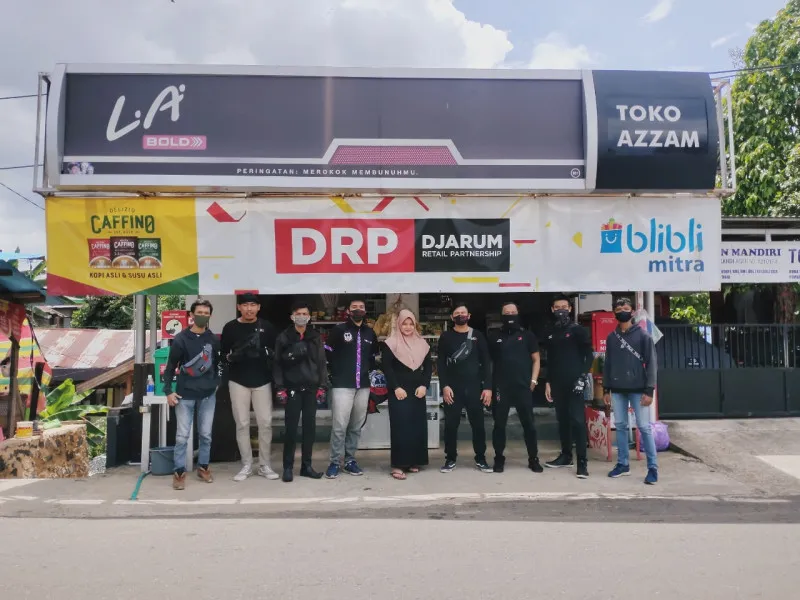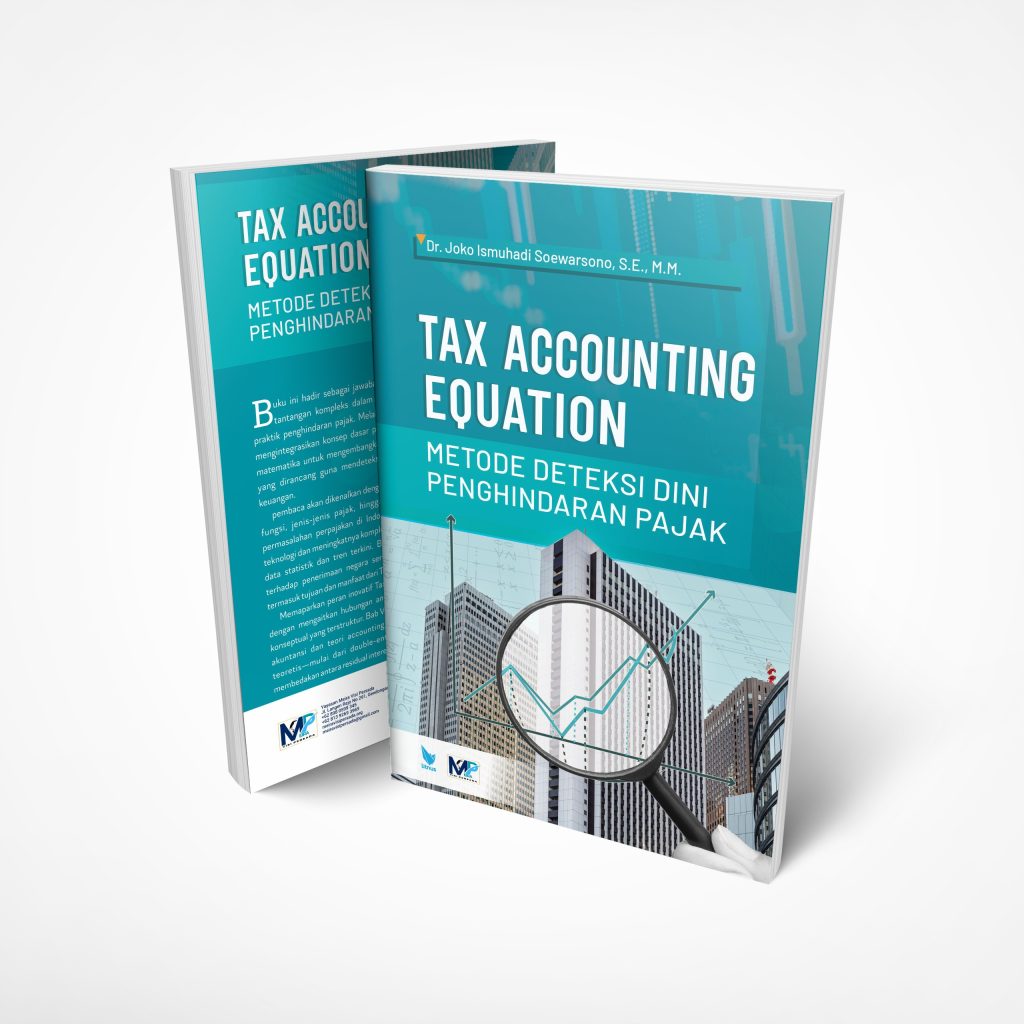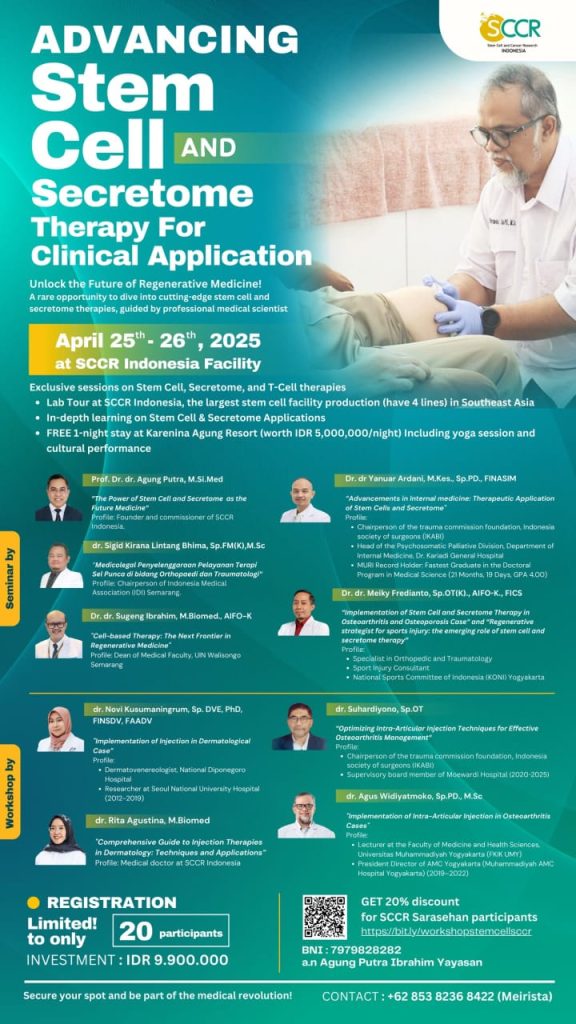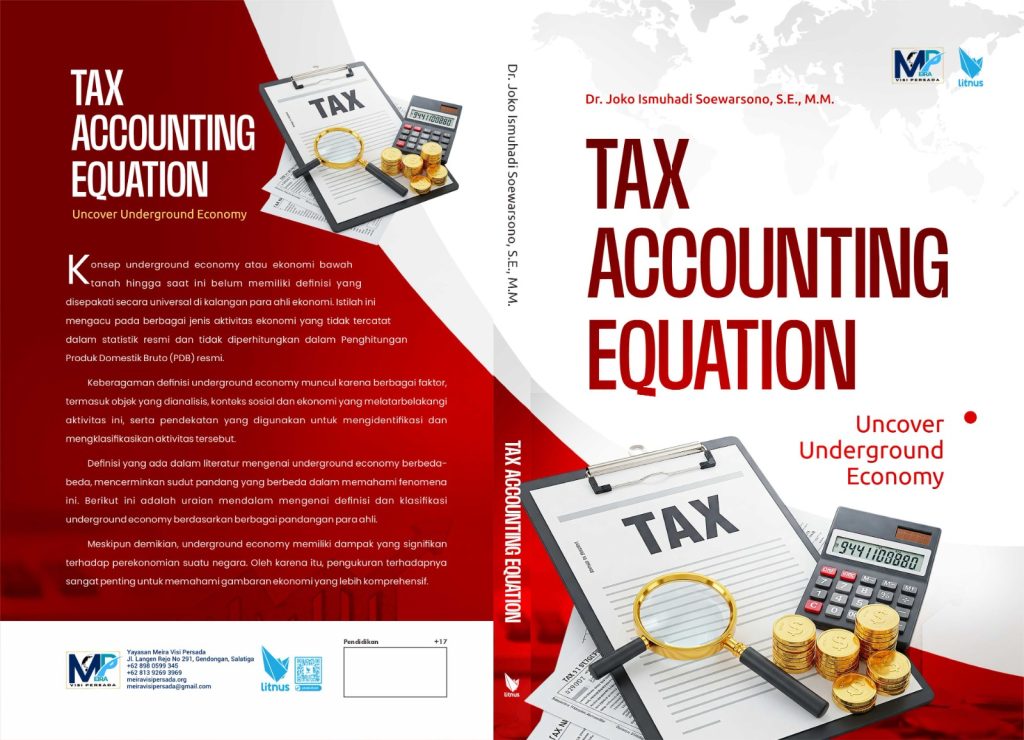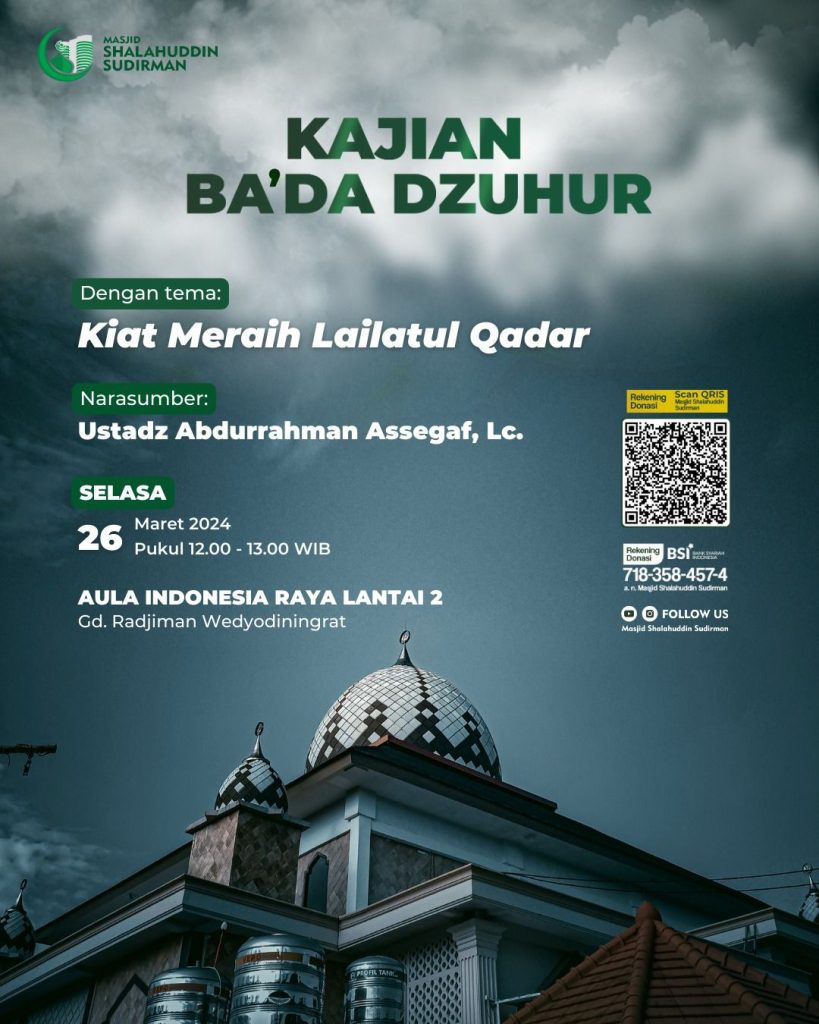
Analysis of the Tax Accounting Equation’s Potential to Address Income Tax Loopholes in Indonesia
- Ekonomi
Friday, 28 March 2025 02:29 WIB

Jakarta, fiskusnews.com:
1. Introduction: The Significance of Income Definition in Indonesian Taxation
A clear and comprehensive definition of income forms a cornerstone of any effective tax system. It serves as the fundamental basis for determining the tax liability of individuals and entities, directly influencing the amount of revenue generated by the state . This revenue is crucial for funding public services, infrastructure development, and other essential government functions. Beyond revenue generation, a robust definition of income is paramount for ensuring fairness and equity within the tax system . When the definition is clear and consistently applied, it fosters taxpayer compliance and minimizes disputes with tax authorities. Conversely, ambiguities or loopholes within the definition can be exploited by taxpayers to reduce their tax obligations, leading to tax avoidance and a significant erosion of the national tax base . This undermines the integrity of the tax system and can create a perception of unfairness among those who comply fully with the law.
In Indonesia, the definition of income for tax purposes is primarily outlined in Article 4 paragraph (1) of the Income Tax Law. This provision has been the subject of ongoing discussion and scrutiny as the economic landscape evolves and new financial instruments and transaction structures emerge. In this context, the proposition by Dr. Joko Ismuhadi Soewarsono regarding the Tax Accounting Equation (TAE) as a potential solution to close legal loopholes in the current income definition warrants careful consideration. The TAE, represented by the formula Revenue = Expenses + Assets – Liabilities, offers a novel approach to defining income that incorporates elements beyond the traditional focus on revenues and expenses. This report aims to critically analyze the claim that Dr. Soewarsono’s TAE can effectively address existing legal loopholes within the current definition of income in Indonesia. By examining the intricacies of Article 4 paragraph (1), exploring the principles behind the TAE, identifying existing loopholes, and evaluating the potential benefits and challenges of adopting the TAE, this report seeks to provide a comprehensive analysis to inform policymakers and stakeholders in the Indonesian tax system. The structure of this report will involve a detailed deconstruction of Article 4 paragraph (1), an examination of the TAE, an exploration of current loopholes, an analysis of the potential and limitations of the TAE, a comparison with the traditional definition, a review of the Indonesian government’s stance on tax reform, and a discussion of the broader implications of integrating balance sheet elements into taxable income calculation, culminating in expert recommendations.
2. Deconstructing Article 4 Paragraph (1) of the Indonesian Income Tax Law:
- 2.1. Exact Wording and Official Interpretations: Article 4 paragraph (1) of the current Indonesian Income Tax Law, as consistently stated across various sources, defines “penghasilan” as “setiap tambahan kemampuan ekonomis yang diterima atau diperoleh Wajib Pajak” . This translates to “every addition to economic capability received or obtained by the Taxpayer.” The law further specifies that this income can originate from both within Indonesia and from outside the country . A crucial aspect of this definition is the stipulation that the income must be capable of being used for consumption or for increasing the taxpayer’s wealth . It is important to note that the Income Tax Law has undergone amendments over time , indicating an ongoing effort to refine and adapt the definition of income to evolving economic realities. Official interpretations of this article, provided by the Directorate General of Taxes and other relevant authorities, elaborate on the broad scope of “tambahan kemampuan ekonomis.” KPMG’s tax guide highlights Indonesia’s self-assessment system, where taxpayers are responsible for calculating and reporting their income tax, subject to audit by the tax authorities . This underscores the importance of a clear and accurate understanding of what constitutes taxable income according to the official interpretation. Various sources provide examples of what falls under this definition, including but not limited to: compensation for work or services (such as salaries, wages, bonuses), income from business profits, capital gains from the sale or transfer of assets, dividends, interest, royalties, and rental income . These examples illustrate the wide-ranging nature of income subject to taxation in Indonesia. However, the law also provides specific exemptions for certain types of income, such as dividends received by domestic corporate taxpayers under specific conditions related to retained earnings and ownership thresholds .
- 2.2. Identifying Inherent Ambiguities and Potential Loopholes: While the definition of income in Article 4(1) appears broad, its reliance on the interpretation of “tambahan kemampuan ekonomis” can introduce subjectivity and potential ambiguities. The criterion of income being “received or obtained” might not adequately capture economic benefits that have accrued to a taxpayer but have not yet been formally realized through a transaction. For instance, the appreciation in the value of an asset held by a taxpayer is an increase in their economic capability, but it is not taxed under the current definition until the asset is sold. This creates a potential loophole where wealth can accumulate in the form of unrealized gains without immediate tax implications.Furthermore, the distinction between capital gains and ordinary income can be complex and subject to manipulation. While this issue is highlighted in the context of the “carried interest loophole” in the United States , the underlying principle of classifying income for differential tax treatment is a universal challenge in income tax law and can be a source of ambiguity in Indonesia as well. The timing of income recognition also presents opportunities for tax planning. Taxpayers might strategically structure transactions to defer the formal receipt of income, thereby delaying their tax liability. Tax avoidance strategies prevalent in Indonesia, such as transfer pricing , exploit the difficulty in determining fair market values for transactions between related entities, allowing for the artificial shifting of profits and the reduction of income recognized within Indonesia. The government’s increasing focus on anti-avoidance measures, including the formalization of the “substance-over-form” principle , acknowledges that taxpayers may attempt to exploit the literal interpretation of the law to minimize their tax obligations, suggesting inherent limitations in the current definition’s practical application. Discussions surrounding Controlled Foreign Corporation (CFC) rules also highlight the complexities in taxing income generated by foreign entities controlled by Indonesian residents, indicating potential loopholes in the current definition’s reach across international borders. The acknowledgment of legal loopholes contributing to corruption further underscores the significant consequences of ambiguities in tax legislation, including the definition of income.
3. Dr. Joko Ismuhadi Soewarsono’s Tax Accounting Equation (TAE): A Novel Approach to Income Definition
- 3.1. Understanding the Formula: Revenue = Expenses + Assets – Liabilities Dr. Joko Ismuhadi Soewarsono’s proposed Tax Accounting Equation (TAE) is represented by the formula: Revenue = Expenses + Assets – Liabilities. This equation can be directly related to the fundamental accounting equation, which states: Assets = Liabilities + Equity . By rearranging the accounting equation to isolate Equity (Equity = Assets – Liabilities) and recognizing that changes in equity over a period typically reflect net income (assuming no significant capital contributions or withdrawals), the TAE can be understood as an attempt to define income by focusing on the factors that ultimately drive changes in a taxpayer’s net worth. The TAE essentially rearranges the basic accounting equation to highlight a measure closely linked to profitability and, consequently, income. The inclusion of balance sheet elements, specifically Assets and Liabilities, directly in the definition of income is a significant departure from the traditional income statement approach . Traditional income statements focus on the flow of revenues and expenses over a specific accounting period to determine net income. In contrast, the TAE incorporates a snapshot of an entity’s financial position at a particular point in time by considering its assets and liabilities. The accounting equation itself is a foundational principle of double-entry bookkeeping, ensuring that the total economic resources of an entity (assets) are always equal to the sum of the claims against those resources by creditors (liabilities) and owners (equity) . The TAE leverages this fundamental relationship to provide an alternative lens through which income can be defined for tax purposes.
- 3.2. Dr. Soewarsono’s Perspective on its Application to Income Tax Snippet explicitly mentions Dr. Joko Ismuhadi in the context of the “Tax Accounting Equation (TAE),” suggesting that he has indeed proposed and discussed this concept. While the linked resource providing further details is inaccessible , Dr. Soewarsono’s profile on ResearchGate indicates his expertise in areas such as tax planning, financial engineering, and taxes, along with his affiliation with the Directorate Generale Tax as a Tax Auditor. This professional background strongly suggests a deep understanding of both accounting principles and the practical challenges of tax administration in Indonesia. The reference to double-entry accounting as a system that recognizes both sides of a business transaction further reinforces the connection between the TAE and fundamental accounting practices. Given his experience as a Tax Auditor, it is reasonable to infer that Dr. Soewarsono’s rationale for proposing the TAE likely stems from a desire to create a more robust, comprehensive, and less easily manipulated definition of taxable income in Indonesia. He might argue that the current transactional-based approach, focusing primarily on realized revenues and expenses, has inherent limitations and creates opportunities for tax avoidance. By incorporating changes in a taxpayer’s overall financial position, as reflected in their assets and liabilities, the TAE could potentially provide a more accurate and complete picture of their economic well-being. This approach could capture increases in wealth that might not be immediately apparent through traditional income statement analysis, such as unrealized gains on assets or benefits derived from the reduction of liabilities. Therefore, Dr. Soewarsono’s proposal likely aims to enhance the effectiveness and fairness of income taxation by leveraging the fundamental principles of accounting to define income in a more holistic manner.
4. Exploring the Landscape of Legal Loopholes in Indonesian Income Tax Law:
- 4.1. Common Tax Avoidance Strategies and Their Exploitation of Existing Definitions: Several common tax avoidance strategies are employed in Indonesia, often exploiting perceived ambiguities or limitations within the current definition of income under Article 4 paragraph (1) . Thin capitalization is one such strategy, where companies increase their debt levels relative to equity to maximize the deductibility of interest expenses, thereby reducing their taxable profit . This takes advantage of the rules regarding deductible expenses under the current law. Transfer pricing involves multinational companies manipulating the prices of transactions between related entities in different jurisdictions to shift profits from higher-tax environments like Indonesia to lower-tax ones . This directly impacts the amount of “income” recognized by the Indonesian entity. Controlled Foreign Corporation (CFC) rules are designed to prevent Indonesian residents from holding income in foreign subsidiaries located in low-tax jurisdictions to defer or avoid Indonesian tax . This strategy relies on the current law’s treatment of foreign-sourced income and the timing of its taxation in Indonesia. Treaty shopping is another tactic where businesses attempt to take advantage of double taxation agreements (DTAs) to gain unintended tax benefits, often by routing income through entities that are not genuinely entitled to the treaty’s provisions . This leverages specific interpretations and applications of the definition of income within the context of international treaties. Finally, the use of tax havens involves funneling profits through jurisdictions with minimal or no tax to reduce the overall tax burden , aiming to avoid the application of Indonesian income tax on certain types of income. These strategies often exploit the current definition’s focus on realized income, allowing for the accumulation of wealth in forms that do not immediately trigger Indonesian tax liability, such as profits retained in offshore entities. The difficulty in establishing objective “arm’s-length” prices for related-party transactions creates opportunities for transfer pricing manipulation. Furthermore, the current definition might not always clearly address the complexities of sophisticated financial instruments or intricate international tax arrangements, leaving room for interpretations that favor tax minimization.
- 4.2. Specific Loopholes that the TAE Aims to Address (Point 3 of the user query): Based on the formula of the TAE (Revenue = Expenses + Assets – Liabilities), several specific legal loopholes and ambiguities in the current definition of income might be addressed by Dr. Soewarsono’s equation. One significant area is unrealized gains. The current definition, focusing on “received or obtained” income, generally does not tax the appreciation in the value of assets until they are sold. The TAE, by incorporating the value of assets, would capture these unrealized gains as an increase in the “Assets” component, potentially leading to a higher calculated “Revenue” figure, which could be interpreted as taxable income. Another loophole the TAE might address is concealed income through asset accumulation. If a taxpayer earns income that is not formally reported as revenue under the traditional definition (e.g., income from informal activities or barter transactions), the resulting increase in their assets would still be reflected in the TAE, potentially indicating undeclared income. Liability reduction without a corresponding expense also represents a potential loophole. For example, if a debt is forgiven, this increases the taxpayer’s net worth (Assets – Liabilities) without necessarily generating traditional revenue. The TAE would capture this as a decrease in “Liabilities,” leading to a higher “Revenue” figure. Furthermore, complex financial strategies designed to delay revenue recognition might still result in an increase in assets, which would be accounted for under the TAE. Finally, regarding base erosion through inflated liabilities, while the TAE includes expenses, the direct inclusion of liabilities in the equation might provide a more direct counter to strategies like thin capitalization by focusing on the overall net asset position (Assets – Liabilities).
5. The Potential of the Tax Accounting Equation in Fortifying Indonesia’s Tax System:
- 5.1. Arguments for Closing Existing Loopholes Through the TAE (Point 4 of the user query): Utilizing the TAE for defining taxable income in Indonesia offers several potential benefits, particularly in addressing the existing loopholes identified. Firstly, it provides enhanced comprehensiveness by considering changes in a taxpayer’s net worth, encompassing economic benefits that might be missed by the traditional focus on realized revenues and expenses. This broader perspective could lead to a more accurate reflection of a taxpayer’s economic capacity to pay tax. Secondly, the TAE has the potential to lead to reduced tax avoidance. By focusing on the overall financial position, it could become more challenging for taxpayers to use sophisticated transactions solely aimed at minimizing their tax liability by manipulating the timing or form of revenue and expense recognition. The inclusion of asset values could also deter strategies that rely on accumulating wealth in untaxed forms like unrealized gains. Thirdly, the TAE could contribute to increased fairness in the tax system. Taxing unrealized gains and other forms of wealth accumulation, which disproportionately benefit wealthier individuals and corporations, could lead to a more equitable distribution of the tax burden. Finally, the direct link to the fundamental accounting equation could promote greater transparency in financial reporting for tax purposes, potentially making it easier for tax authorities to monitor changes in a taxpayer’s financial position over time.
- 5.2. Enhancing the Clarity and Comprehensiveness of Taxable Income Definition: The TAE has the potential to contribute to a clearer and more comprehensive definition of taxable income in Indonesia due to its formulaic nature. The equation Revenue = Expenses + Assets – Liabilities provides a seemingly objective and quantifiable measure of income, which could potentially reduce the ambiguity inherent in the current broad definition of “setiap tambahan kemampuan ekonomis” . By directly linking to fundamental accounting principles , the TAE offers a more structured and comprehensive framework for determining what constitutes taxable income. This explicit formula could provide greater certainty for both taxpayers and tax administrators compared to the current principle-based definition in Article 4(1), which relies more heavily on interpretation and examples. The clarity offered by the TAE could minimize disputes and lead to a more predictable and transparent tax system.
6. Navigating the Challenges and Limitations of Implementing the TAE:
- 6.1. Practical Considerations in Applying the Balance Sheet Approach to Taxation (Point 5 of the user query): Implementing the TAE as the primary definition of income for tax purposes in Indonesia would present several significant practical challenges and limitations. One of the most substantial hurdles would be the valuation of assets and liabilities. Accurately and consistently valuing a wide range of assets, including real estate, financial instruments, and intangible assets, for all taxpayers would be an extremely complex and potentially contentious process. This is particularly true for assets that are not frequently traded or lack readily available market prices. Subjectivity in valuation could lead to disputes between taxpayers and tax authorities and create new avenues for tax avoidance. Another major challenge is the taxation of unrealized gains. Taxing the appreciation in the value of assets before they are sold could create significant cash flow problems for taxpayers, especially those holding illiquid assets or long-term investments. They might be required to pay tax on gains they have not yet realized in cash, potentially leading to financial hardship or the need to liquidate assets prematurely. The increased administrative burden associated with implementing the TAE would also be considerable. Taxpayers would likely need to provide much more detailed information about their assets and liabilities on a regular basis, and tax authorities would face the daunting task of verifying this information and ensuring consistent valuation practices. Furthermore, the complexity and understanding of the TAE might pose a challenge for the average taxpayer, making compliance more difficult compared to the current, more transaction-focused system. Finally, while the TAE aims to close existing loopholes, the valuation of assets and liabilities could itself become a new area for potential manipulation and tax avoidance, requiring robust oversight and enforcement mechanisms.
- 6.2. Ensuring Alignment with Current Indonesian Tax Regulations and Accounting Standards: A significant challenge in implementing the TAE would be ensuring its alignment with current Indonesian tax regulations and accounting standards. The entire framework of the current Indonesian Income Tax Law is predicated on the definition of income in Article 4(1). Adopting the TAE as the primary definition would necessitate a fundamental overhaul of numerous other provisions related to deductions, exemptions, tax rates, and reporting requirements. For example, provisions regarding the deductibility of certain expenses might need to be reconsidered in the context of the TAE. Similarly, the treatment of specific types of income currently subject to final tax might need to be adjusted. Furthermore, the compatibility of the TAE with Indonesian accounting standards (e.g., PSAK) would need careful examination. While the TAE is rooted in the basic accounting equation, the specific rules and principles for recognizing and measuring assets and liabilities under PSAK might not perfectly align with the objectives of a tax system based on the TAE. Adjustments and specific tax accounting rules would likely be required to bridge any potential gaps or inconsistencies.
- 6.3. Addressing the Complexities of Asset and Liability Valuation for Tax Purposes: Delving deeper into the complexities of asset and liability valuation under the TAE framework reveals several critical issues. The frequency of valuation would need to be determined. Would taxpayers be required to value all their assets and liabilities annually for tax purposes? This could be very burdensome and costly, especially for individuals and small businesses with diverse holdings. Establishing standardized and accepted valuation methods for various asset classes would be essential. For readily traded assets like publicly listed shares, market value might be appropriate. However, for less liquid assets like real estate, private company shares, or unique collectibles, determining a fair market value could be challenging and might require professional appraisals. The treatment of depreciation and amortization would also need to be clarified. Under the current system, these concepts are used to allocate the cost of assets over their useful lives for tax deduction purposes. How these concepts would fit into the TAE framework, which focuses on changes in overall asset values, would need careful consideration. The valuation of intangible assets, such as goodwill, brands, and intellectual property, presents a particularly difficult challenge due to their inherent subjectivity and the lack of readily available market prices. Similarly, while the valuation of most liabilities might be more straightforward (e.g., loan balances), the valuation of contingent liabilities or complex financial instruments could also pose challenges.
7. A Comparative Analysis: Traditional Income Definition Versus the Tax Accounting Equation:
- 7.1. Contrasting the Focus on Economic Benefit with the Balance Sheet Perspective (Point 6 of the user query): The traditional definition of income in Article 4 paragraph (1) of the Indonesian Income Tax Law focuses on “economic benefit received or accrued” by the taxpayer . This approach primarily emphasizes the inflow of economic value to the taxpayer, typically through transactions such as the sale of goods or services, the receipt of wages, or the realization of gains from the disposal of assets. In contrast, the definition of income implied by the Tax Accounting Equation (TAE) centers on the change in a taxpayer’s net worth over a specific period. Net worth is essentially the difference between a taxpayer’s total assets and total liabilities. The TAE, by considering the beginning and ending balances of assets and liabilities, implicitly captures the net effect of all economic activities that have impacted the taxpayer’s financial position, regardless of whether these activities involved formal revenue or expense transactions in the traditional sense.
- 7.2. Implications for the Treatment of Realized and Unrealized Income: The traditional definition of income in Indonesia generally taxes income when it is realized. For instance, a gain from the sale of property is taxed in the year the sale occurs. Similarly, income from employment is taxed when the wages or salary are received. This realization-based approach means that increases in the value of assets that have not been sold (unrealized gains) are typically not subject to income tax under the current framework. However, the Tax Accounting Equation (TAE) has significant implications for the treatment of both realized and unrealized income. By incorporating the values of assets and liabilities in its calculation, the TAE would likely lead to the taxation of unrealized gains. For example, if the market value of shares held by a taxpayer increases during the tax year, this increase would be reflected as a higher asset value in the ending balance sheet, potentially resulting in a higher calculated “Revenue” figure under the TAE, even if the shares were not sold. Conversely, unrealized losses, such as a decrease in the value of an asset, would also be factored into the TAE, potentially reducing the calculated income.
- 7.3. Table 1: Key Differences Between Traditional Income Definition and the Tax Accounting Equation:
| Feature | Traditional Income Definition (Article 4(1)) | Tax Accounting Equation (Implied) |
| Focus | Economic benefit received or accrued | Change in net worth |
| Elements Included | Revenue, Expenses | Revenue, Expenses, Assets, Liabilities |
| Realized Income | Taxed | Taxed |
| Unrealized Income | Generally not taxed | Potentially taxed |
| Basis of Measurement | Primarily transactional | Balance sheet changes |
| Potential for Loopholes | Higher potential | Potentially lower potential |
| Administrative Complexity | Potentially lower | Potentially higher |
8. The Indonesian Government’s Stance and the Trajectory of Income Tax Reform:
- 8.1. Analyzing Official Statements and Reports on Dr. Soewarsono’s TAE or Related Reforms (Point 7 of the user query): The provided research snippets do not contain any official statements, reports, or discussions from the Indonesian Directorate General of Taxes or other relevant government bodies specifically regarding Dr. Soewarsono’s proposed Tax Accounting Equation (TAE). This does not necessarily indicate a lack of awareness or consideration of the proposal, but rather that such information is not present within the provided materials. However, the Indonesian government has demonstrated a clear commitment to addressing tax avoidance and strengthening its tax system through various initiatives. The active implementation of the Global Minimum Tax provisions signifies a willingness to adopt significant reforms to align with international standards and combat tax avoidance by multinational enterprises. Furthermore, ongoing efforts to enhance anti-avoidance measures, such as the formalization of the “substance-over-form” principle and the strengthening of rules targeting thin capitalization, transfer pricing, and Controlled Foreign Corporations (CFCs) , indicate a broader trend towards a more robust and effective tax system. The fact that the Income Tax Law has been subject to amendments over time also suggests an openness to considering further reforms if they are deemed beneficial for the Indonesian tax system.
- 8.2. Considering Broader Trends in Indonesian Tax Policy and Anti-Avoidance Measures: The general trends in Indonesian tax policy reveal a strong emphasis on strengthening anti-tax avoidance measures . The increasing focus on the “substance-over-form” principle empowers tax authorities to look beyond the legal form of transactions to their underlying economic reality, allowing them to challenge arrangements that lack genuine business purpose and are primarily aimed at reducing tax liability. Specific anti-avoidance rules targeting common tax evasion techniques like thin capitalization, transfer pricing, and CFCs are being actively enforced and, as evidenced by recent regulations , are being further refined and expanded. Indonesia’s active participation in international efforts to combat tax evasion and avoidance, such as its commitment to the Global Minimum Tax initiative , also reflects a broader policy trend towards greater transparency and stricter compliance requirements within the tax system . These trends suggest a potential alignment with the underlying goals of the TAE, which seeks to provide a more comprehensive and less easily avoided definition of income.
9. The Impact of Integrating Balance Sheet Elements into Taxable Income Calculation:
- 9.1. Analyzing the Potential Expansion of Taxable Income Scope (Point 8 of the user query): The inclusion of balance sheet elements (Assets and Liabilities) in the TAE would likely lead to a significant expansion in the scope of taxable income compared to the current definition, which primarily focuses on economic benefit received or accrued through transactions. The most notable impact would be the potential taxation of unrealized gains on assets. Currently, the Indonesian tax system generally taxes capital gains only when an asset is sold or otherwise disposed of. Under the TAE, the annual increase in the value of assets held by a taxpayer, even if not sold, would be reflected as an increase in their net worth and could potentially be considered taxable income. Similarly, reductions in liabilities, such as through debt forgiveness, would also likely be treated as income under the TAE, as they directly increase the taxpayer’s net worth, even though they do not represent a traditional inflow of economic benefit. Conversely, unrealized losses (decreases in asset values) and increases in liabilities would potentially reduce the taxable income calculated under the TAE, which might not always be the case under the current realization-based system.
- 9.2. Implications for Various Taxpayers and Transaction Types: The potential expansion of taxable income scope under the TAE could have varied and significant implications for different types of taxpayers and various transaction types. Individuals holding substantial investment portfolios, particularly those with appreciating assets like stocks or real estate, could see a significant increase in their taxable income due to the inclusion of unrealized gains. They might face tax liabilities even if they have not actually received any cash from these gains. Businesses holding appreciating assets, such as land, buildings, or intellectual property, would also be affected. The treatment of investment income would fundamentally change, shifting from a focus on realized gains and dividends to a broader consideration of changes in the value of investment holdings. For business income, the TAE would necessitate a more comprehensive accounting of all assets and liabilities, potentially impacting businesses with significant holdings of inventory, receivables, or payables. The timing of tax liabilities might also shift for many taxpayers, potentially requiring them to pay tax on income they have not yet received in cash, which could create liquidity challenges, especially for those holding illiquid assets. The implications for savings and capital markets would also need careful consideration, as the taxation of unrealized gains could potentially influence investment behavior.
10. Conclusion and Expert Recommendations: Towards a More Robust Definition of Taxable Income in Indonesia
In conclusion, Dr. Joko Ismuhadi Soewarsono’s Tax Accounting Equation (TAE) presents a novel approach to defining taxable income in Indonesia that has the potential to address some of the existing legal loopholes within the current definition in Article 4 paragraph (1) of the Income Tax Law. The TAE’s strength lies in its comprehensive nature, incorporating balance sheet elements to capture changes in a taxpayer’s net worth, including unrealized gains and reductions in liabilities, which might escape taxation under the traditional realization-based system. This could lead to a more equitable distribution of the tax burden and potentially reduce opportunities for sophisticated tax avoidance strategies.
However, the implementation of the TAE as the primary definition of income would also present significant challenges. The practical difficulties associated with accurately and consistently valuing a wide range of assets and liabilities for all taxpayers, the potential for liquidity issues arising from the taxation of unrealized gains, and the increased administrative burden for both taxpayers and tax authorities are major hurdles that would need to be carefully addressed. Furthermore, the integration of the TAE into the existing Indonesian tax regulations and its alignment with current accounting standards would require substantial legislative and administrative reforms.
Given these potential benefits and challenges, the Indonesian government should consider a multi-faceted approach to strengthening its definition of taxable income. While the TAE offers a compelling alternative framework, a comprehensive feasibility study is recommended to thoroughly analyze its practical implications and potential impacts on various taxpayer groups and the economy as a whole. This study should include detailed analysis of valuation methodologies, potential transitional mechanisms, and the necessary legal and regulatory changes.
As an immediate step, the government could explore the possibility of a hybrid system that incorporates elements of both the traditional income definition and the TAE. This could involve gradually expanding the tax base to include certain types of unrealized gains or benefits from liability reductions while retaining the current focus on realized income for other transactions. Simultaneously, prioritizing the strengthening of existing anti-avoidance measures and closing specific loopholes within the current legal framework remains crucial. This includes continued efforts to enforce the “substance-over-form” principle and enhance rules targeting thin capitalization, transfer pricing, and CFCs. Investing in enhancing tax administration capabilities to effectively monitor and enforce any changes to the definition of income is also essential. Finally, engaging in extensive consultation with tax professionals, academics, and other stakeholders throughout any reform process will be critical to ensure that any changes are well-considered, practical, and contribute to a more robust and equitable income tax system that supports Indonesia’s economic development and social well-being.
Reporter: Marshanda Gita – Pertapsi Muda
Share
Berita Lainnya
Apa Itu Hak Angket DPR? Ketahui Tujuan, Dasar Hukum, dan Mekanisme Pelaksanaannya
Perlukah Revisi UU PPh?
Harvey Moeis Korupsi Rp271 T, Ingat Lagi Sentilan Sri Mulyani: Ada Anak Dibelikan Pesawat sama Ortunya
Apa yang Harus Dilakukan Jika Mendapat Surat Cinta dari Ditjen Pajak?
Uncovering Underground Economy Activity: An Analysis of Dr. Joko Ismuhadi’s Tax Accounting Equation
Simak, Promo HUT BCA Dari Makanan hingga Hiburan
Rekomendasi untuk Anda

Berita Terbaru
Eksplor lebih dalam berita dan program khas fiskusnews.com
Tag Terpopuler
# #TAE
# #TAX ACCOUNTING EQUATION
# #TAX FRAUD
# #TAX EVASION


